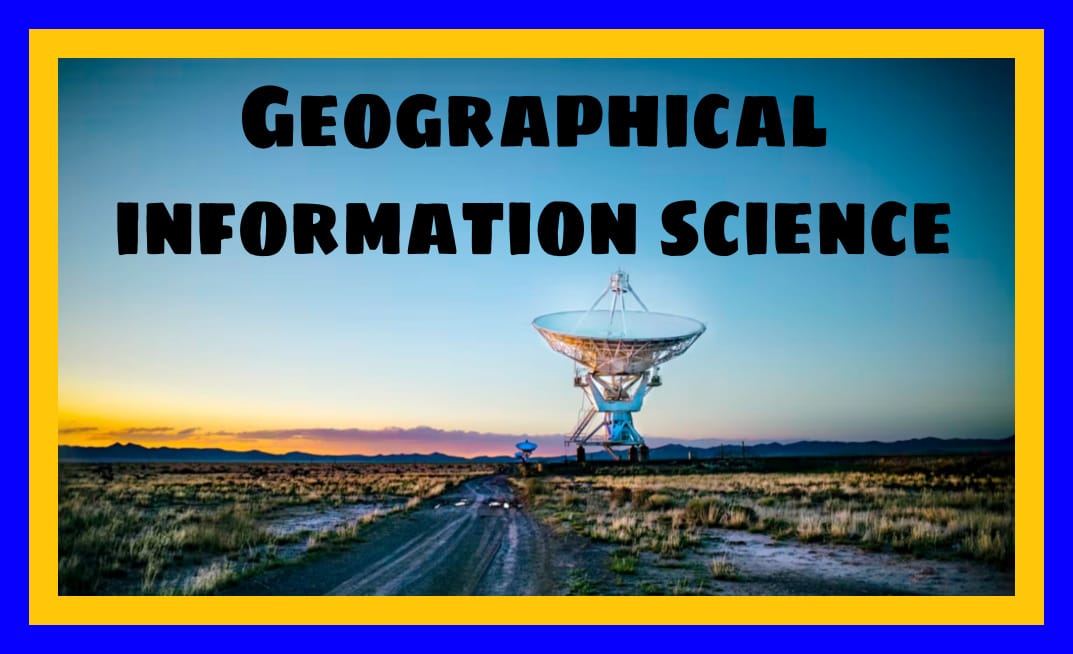Geographical Information Science and Systems: Today and Tomorrow
GIS or Geographical Information Science today has made it easier to comprehend the environment and make environmental decisions. Geographic spread of data can easily be used to gain a better understanding of distribution patterns with the help of Geographic Information Science. Forestry, climate science, Urban planning, military, mining, public health, emergency management and other related fields are using Geographical Information Science. Due to it’s vast and increasing demand, people are considering Geographical Information Science as an exciting and professional option. Later in this article, we will discuss more about the career options in Geographical Information Science.
Table of Contents:
- What Is Geographic Information Science?
- Difference Between Geographical Information Science & Geographical Information System?
- How Does Geographical Information System Work?
- What are the Benefits Of Geographical Information Science?
- What Are The Components Of Geographical Information Science?
- GI Science In Land Resource Management
- Geographical Information Science/Systems In Forest Management
- GIScience To Combat Desertification
- Geographical Information Science (system) In Watershed Management
- Application Of GIS In Agriculture
- Growing Field Of GIScience
- Conclusion:
- FAQ on Geographical Information Science
What Is Geographic Information Science?
Geographical Information Science in a nutshell is the process of analyzing, storing, visualizing and managing Geographic data of a particular location on the earth.
Difference Between Geographical Information Science & Geographical Information System?
Geographical Information Science is concerned with the “How” and its development whereas Geographical Information System is concerned with “what” and “where”.
GIS entails the conceptual ideas for implementing Geographical Information System.
Geographical Information Science for example, considers how to store spatial data, collect and analyze it.
Remote sensing, Geography, mathematics, programming and surveying are all covered under one umbrella.
How Does Geographical Information System Work?
- with the help of satellite we collect images of a particular location on the earth.
- majority of this information is gathered using remote sensing technology.
- with the help of Ground photographs, aerial photographs and satellite photographs of the study area, all data is collected.
- the data collected over the period of time is used for analysis and research work.
- the photographs chosen is usually determined by the topography of the study area.
- the data is broken down into various components and elements. With elements we mean tone, texture, pattern, association, size and shape. All are critical in the analysis process.
- All the data available is further stored in the computer.
- the verification of the collected data on the ground is done.
- Field points are identified and visited to confirm information related to vegetation, geomorphology, soils and other factors.
What are the Benefits Of Geographical Information Science?
Geographical Information Science enables people to see and analyze different kinds of data. It has many benefits such as:
i) allows the people to see the world in a different way.
ii) Helps in mapping the position making it easy to locate a place in remote areas.
iii) can show many different kinds of data on one map such as soil, vegetation, streets etc.
iv) helps in understanding patterns, relationships and changes happening in a specific area.
What Are The Components Of Geographical Information Science?
There are mainly 6 key components of GIS:
i) Database – It is the data or the information which is used in doing the analysis.
ii) Software – Helps in running the database.
iii) Hardware – Is the actual computer which runs the software.
iv) Network – It is the network of computers where data is shared.
v) Management and Procedures – It is a procedure of collecting data for further analysis.
vi) People – They are the actual experts who do the analysis based on the data available.
GI Science In Land Resource Management
Any nation’s economic, social and cultural viability is largely determined by its land and water resources. These resources are critical to a nation’s economy because they provide critical employment and serve as a source of raw materials for various industries, provide food, income, medicine, energy etc.
However, learning how to use these resources in a sustainable manner is critical for nations to ensure that their benefits are enjoyed by current and future generations. Therefore, if these resources are not used effectively and efficiently, it will get depleted.
Geographical Information System help in providing data for land resource management. It is very much helpful because of the world’s ever-increasing population and fast depleting resources .
Geographical Information Science/Systems In Forest Management
Forest cover has decreased due to human encroachment all over the world. Ever increasing population has resulted in a significant increase in human-wildlife conflicts. Finally, the depletion of natural resources has resulted in a rise in the cost of living, changes in weather patterns and a reduction in economic, social and cultural benefits derived from their use.
Due to these constraints, it is critical to ensure that these resources are managed effectively. Therefore, as we know that technologies provide a platform for managers to generate useful data and information that can help in making long term sustainability decisions.
To achieve this, a variety of management practices in the field of natural resource management have been developed. Some have been successful while others have failed to produce desired results. With the help of remote sensing and GIS people are making constant efforts in forest management and wildlife conservation.
GIScience To Combat Desertification
Geospatial are useful in determining the soil types and nutrient availability in a given area. Once you have the data of a longer period of time say 8 to 10 years, negative change can easily be identified. With the help of GIS data, land use practices and vegetation composition in a given area as well as their environmental impact can easily be determined.
With all this information, one can easily determine whether desert-like conditions are encroaching in a given area or not. Once it is diagnosed, their effects and intensity can be minimized. In this way, with the help of Geographical Information Science (system), the desertification of land can easily be controlled.
Geographical Information Science (system) In Watershed Management
Water has been depleting as a resource over time. Clean and safe drinking water has always been in short supply in Africa and other developing countries. Despite the monsoon, which brings plenty of rain and overflowing rivers, there is a severe water shortage in some parts of India. It’s worth noting that India is also home to “Cherapunji,” the world’s wettest spot.
This is because watershed management has been a problem in developing countries. Water bodies such as rivers, lakes, dams and reservoirs on the other hand, can be mapped in 3D using satellite data and GIS technology. Authorities can determine which region require effective protection and management. At the same time, decisions about the most efficient ways of utilizing these regions can always be made.
Application Of GIS In Agriculture
GIS in agriculture depend on satellites, drones and sensors. With the help of these tools images are created. Further, these images are connected with maps of a particular location. With the help of these information you get a final map featuring crop position, topography, soil type, fertility of soil, crops health status etc.
These information are essential to
- increase crop yield production
- Crop health monitoring
- Pest control
- irrigation
- flooding, erosion and controlling droughts etc.
Growing Field Of GIScience
GIS has evolved into an all round career choice for those who enjoy interacting with data to produce insightful results. You can be successful in this field if you adopt a growth mindset and continue to learn everyday. GIS has a huge demand in almost all the sectors and will continue to have for at least next 15 to 20 years.
Conclusion:
If you are reading this article, then you probably know the importance of Geographical Information Science (system). Today, GIS has made it easier to comprehend the environment and make environmental decisions. To gain a better understanding of distribution patterns, one can use GIS to analyze the geographic spread of data.
FAQ on Geographical Information Science
What is the scope of GIS?
Many people, at least today, are curious about the future of GIS jobs. You most likely already know the answer. GIS is used in a variety of fields, including urban planning, forestry, fishing, climate change, military and defense services, emergency management, health, mining, and agriculture, among others. Because it has spread to every field, it has created its own space and demand in a variety of fields.
Is GIS a good career?
Of course. GIS entails the implementation of complex data sets into understandable and useful knowledge for industries to use. People should think about GIS as a fun and rewarding career path. The jobs associated with GIS is highly lucrative.
How is GIS useful to a common man?
While travelling to new places, the majority of people nowadays use maps to help them navigate to their destination. The Global Positioning System (GPS) also works with the help of Geographical Information Science/Systems. It also helps in laying down pipelines and on developing other means of transportation. Are you aware of Elon Musk’s underground pipeline transportation.





Very informative! 👌👌👌